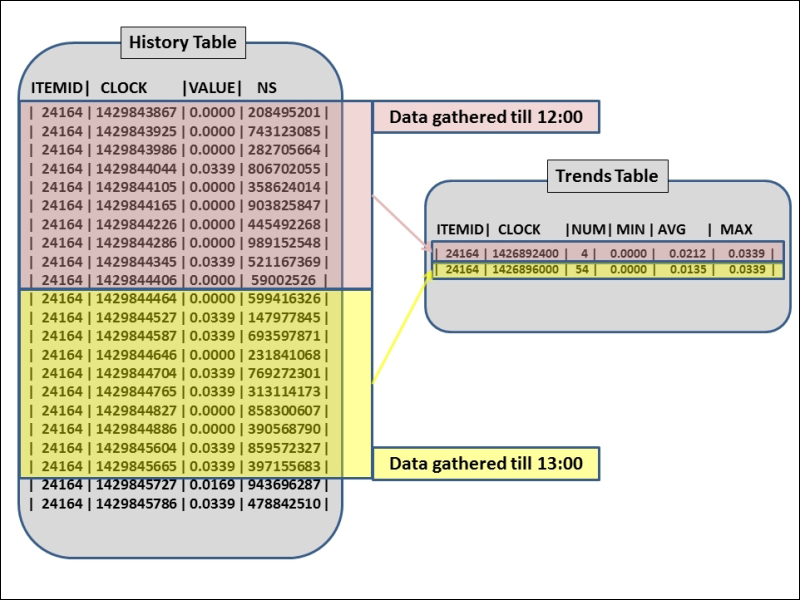Let's cover another important point that is, at times, forgotten by Zabbix administrators. Differently from other monitoring tools, Zabbix allows each item to have its own time for data holding configured individually. There are two ways for this to occur.
Zabbix works with five history tables, two of which are used to store numerical data (history and history_unit).
Each item can have its own retention time defined in the History storage period field (in days). This period defines the maximum amount of time (in days) that the collected values from the particular item will remain in the database.
After this period, an internal process called housekeeping will remove the old data from the database. This function creates concurrency competition for reading and writing. At this point, the housekeeping tool needs to select the data that will be erased and also issue DELETE SQL statements that will be generated to eliminate this data.
Like history tables, it is also possible to set a maximum retention time for each item in trend tables, which are actually a consolidation of data from history tables.
Every hour (00:00, 01:00, 02:00, 03:00, and so on), an internal function of the Zabbix Server accesses the history tables that store numerical data and aggregates the data from the last hour. This process will generate a new row in the trends table with the consolidated data. The trend storage period directive (in days) will set the retention time of this item in the trend tables.
With this in mind, we can understand that we can work with two retention settings for the items. The following is the impact of this function when talking about Zabbix's performance:
- We will have an item with a gathering time (update interval delay) of 60 seconds. This setting will generate 60 values (or rows) in the history tables in 1 hour. Each row needs approximately 90 bytes.
- Every hour (00:00, 01:00, 02:00, 03:00, and so on), Zabbix will aggregate the 60 values it has received in one unique row in the trends table. Each row has about 128 bytes. The composed row is made up of four values:
min,max,avg, andnum(count). The next figure shows you how trends work:
Once more, default templates are the villains in our scenario. This is because they, as a standard, have a retention time of 90 days for history tables, and 365 days for trends tables.
The question here is: do we need to keep the collected data for so long? Probably not, and we can use different times for specific data.
